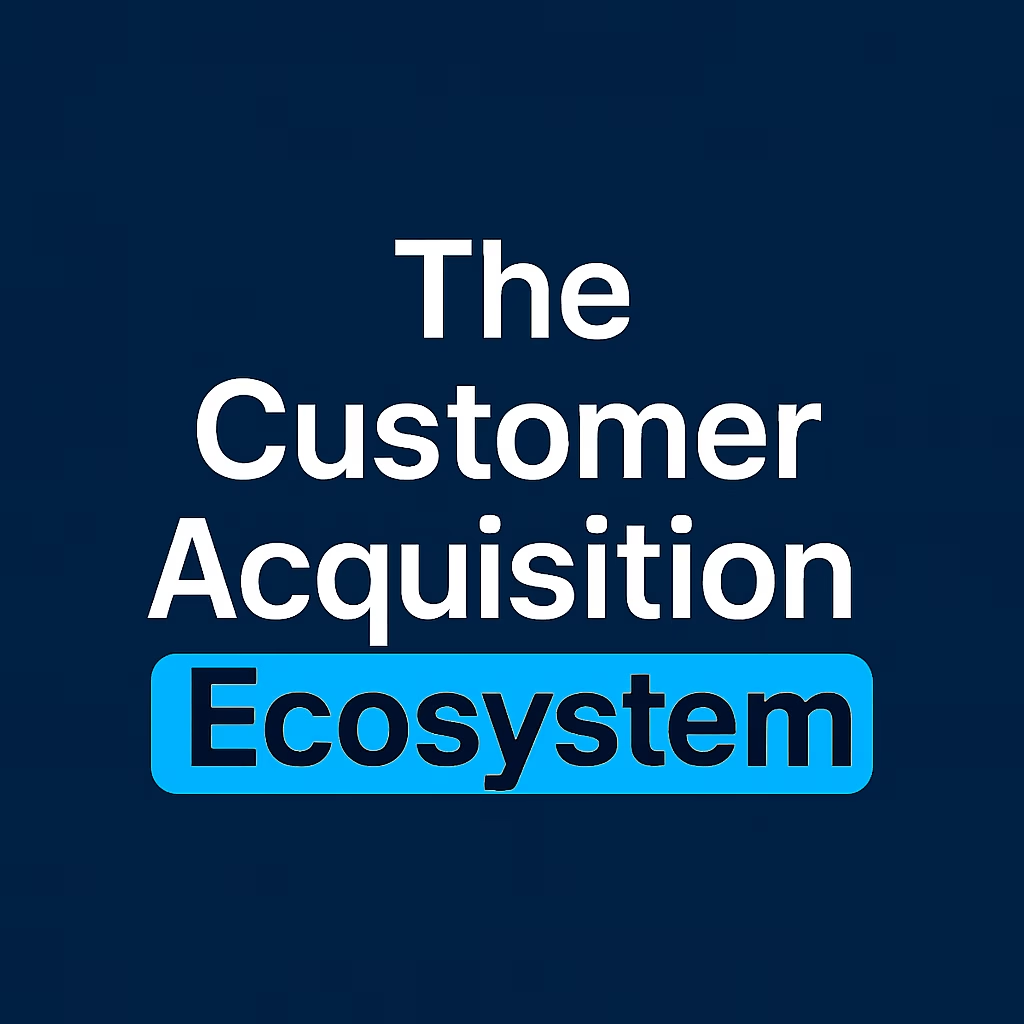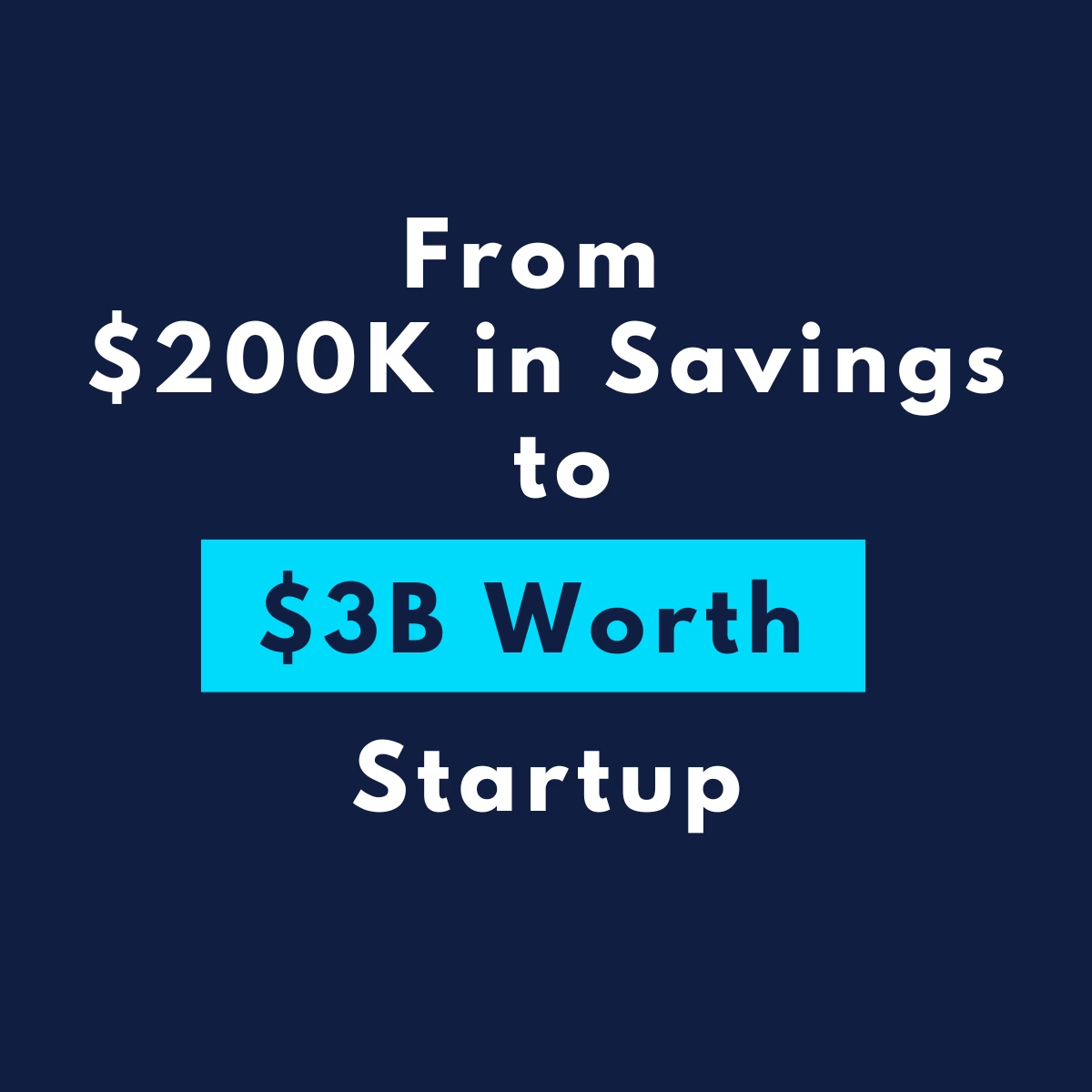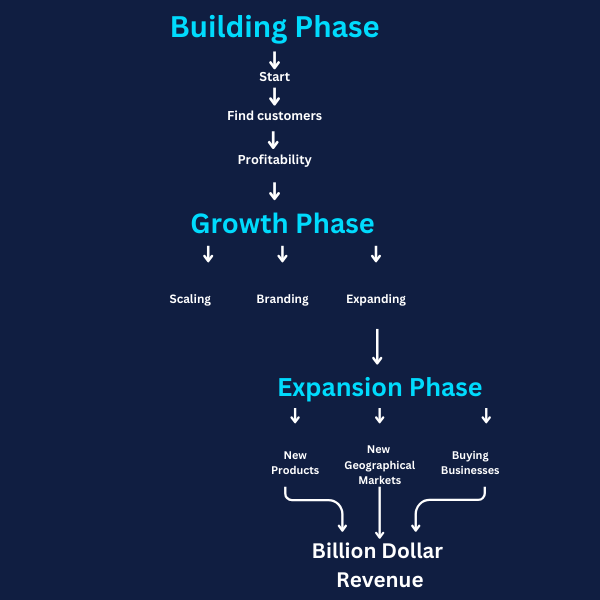
Where is your business right now? Are you in the building phase, the growth phase, or the expansion phase?
Why am I asking you this?
Well. Because I’ve been analyzing some of the Fortune 500 companies, searching for the common denominators, the key factors they all go through to build billion-dollar businesses.
Now, don’t focus on the billion-dollar mark because that may not be the reality for most of us. Instead, focus on the cycles these companies go through to get there.
Each phase requires a different mindset, strategy, and set of resources.
And here’s the truth: No company reaches the billion-dollar revenue mark without expansion.
Literally no company!
So, let’s break it down.
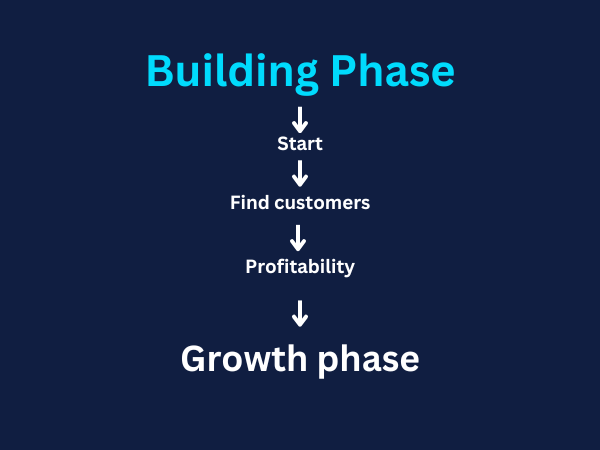
The Building Phase
When you start a business, your first major milestone is often:
Can this business pay me full-time salary?
With a dreamy vision of making a fortune and becoming rich, the initial goal is to navigate through three essential stages:
- Create a product or service
- Find and learn how to reach your customers
- Generate income and become profitable
Sounds simple, right?
The thing is that each stage can take anywhere from three months to 18 months, assuming everything goes well.
Take Google (a service-based business) as an example.
It took them three years to become profitable after launching AdWords.
For the first two years, they didn’t make a single dollar, relying entirely on investors to sustain them.
On the other hand, Apple (a product-based business) started making money in its first year, though it took them two years to become profitable.
Their breakthrough came when Byte Shop ordered 50 Apple I computers, paying $500 per unit upfront.
This single order brought in $50,000+ in revenue within the first year.
This phase is where most of the small businesses remain stuck.
As long as they continue to grow, even slowly, and the founder stays deeply involved, they survive.
But the moment growth stops, decline begins, eventually leading to the business ceasing to exist.
If you are here, it means it’s interesting, would you subscribe to the newsletter so you do not miss the next issues.
Cool, now lets continue to the more juicier parts!
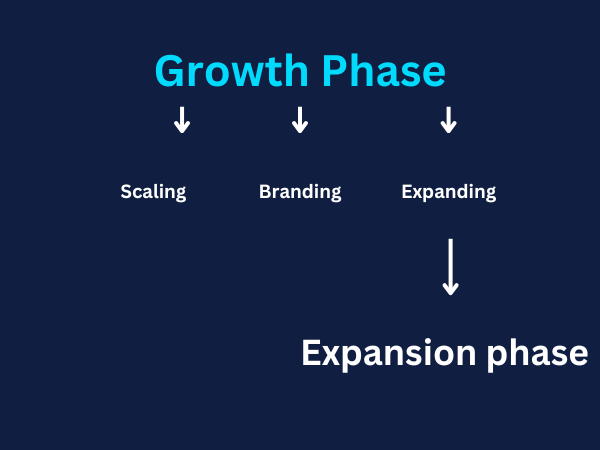
2. The Growing Phase
Every business goes through the building phase, and each of them has been a small business somewhere in their journey.
The growth phase is what differentiates large enterprises from small businesses, this is the step further that those who want to grow their businesses have to take.
That means there are two ways they can increase the revenue:
- Cheap products and services, A large customer base
- Premium prices, fewer customers with higher purchasing power.
Growth requires strategic planning, an increased budget, and a team of experts who can take your vision to the next level.
Automating to be more efficient is no longer an option, it’s a necessity!
in this phase, you go through 4 stages,
- Growth stage: where you automize the business, make the processes efficient, and plan the growth strategy.
- Scaling the business: upgrading the products and services and acquiring more customers.
- Building a brand: Do people know your brand? Does the business have core fans? This is the ultimate goal of building a brand. I know Mercedez Benz, but I never owned one.
Most of the startups are not profitable when they move to this phase. The reason for that is they usually raise funds from investors that should cover the growth budget.
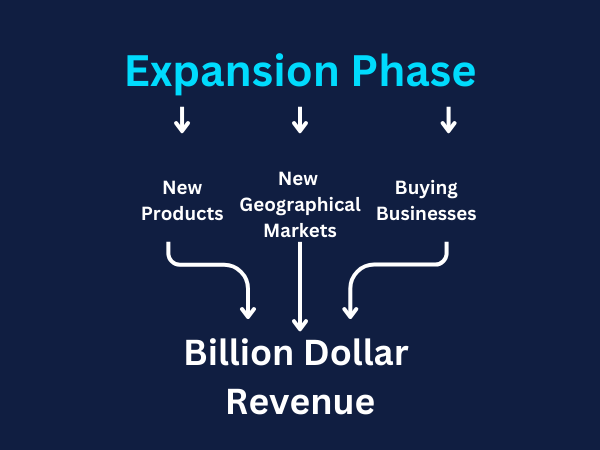
3. Expansion: The road to a Billion-Dollar Business
To build a business that generates billions in revenue, expansion is inevitable.
After researching numerous companies, I found that expansion typically happens in three ways:
- Expanding product and service offerings – Creating new and improved products or introducing additional services.
- Geographical expansion – Entering new locations, whether in different regions, countries, or even continents.
- Acquiring other businesses – Buying companies within the same industry to grow market share and capabilities.
I searched for a company that generates billions in revenue without expanding, but almost every major brand follows at least one of these strategies.
Two exceptions I found are Rolex and Ferrari. However, both brands consistently release new and upgraded products while being available for purchase worldwide—provided you can afford them.
So, while they don’t chase mass-market growth, they still follow the first two expansion models:
- They innovate within their product line.
- They sell globally but target only the wealthiest 5% of the population.
Even without mass expansion, exclusivity and high-margin products allow them to thrive in the billion-dollar business club.
If you get to this point it means you read the whole article.
That means it was valuable
You can’t leave without subscribing would you?
You will get the next issues in your mail

